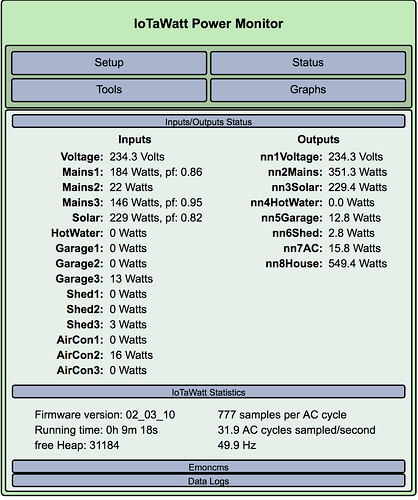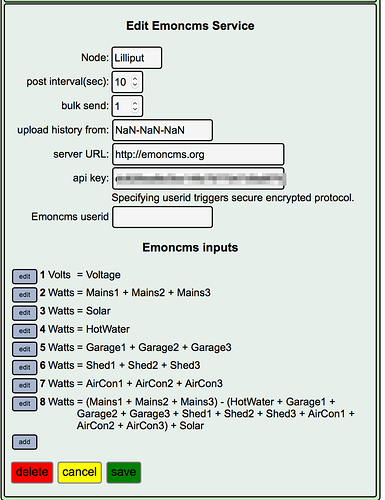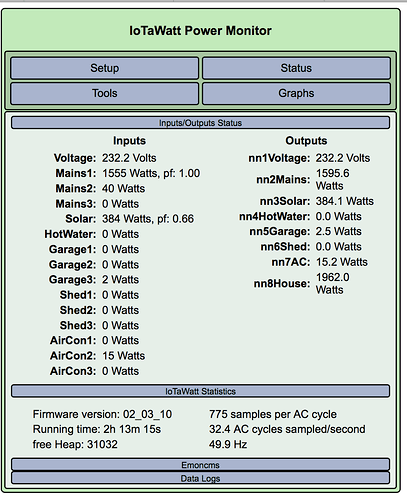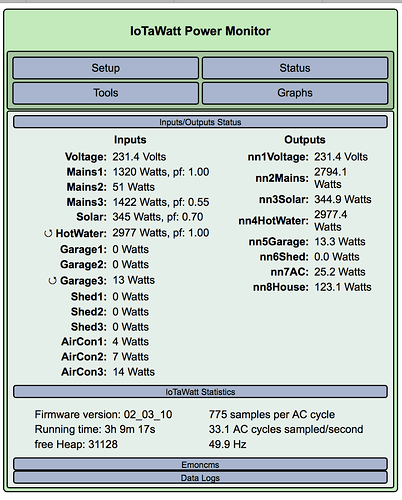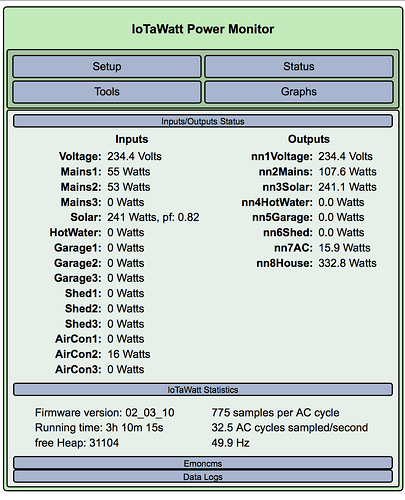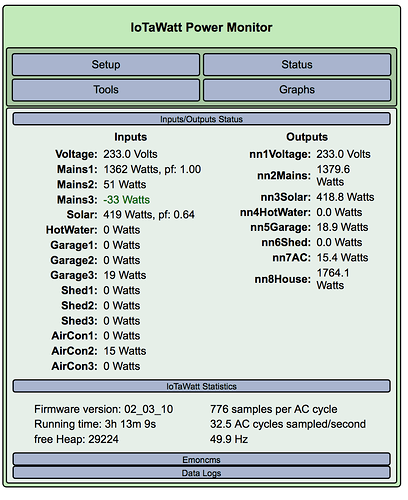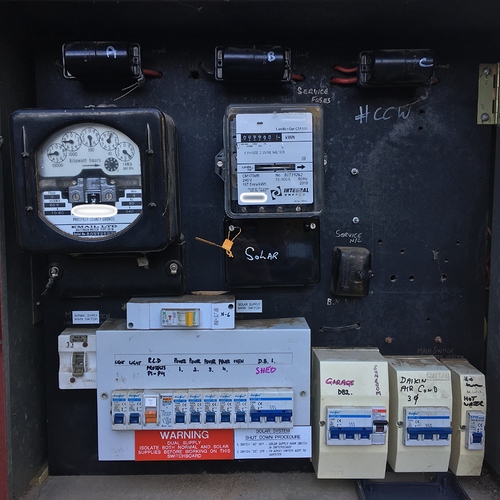Notes and observations:
Voltage Power was calibrated, tested and is correct.
From the panel in the Solar Unit (CMS 2000) I can see that the voltage in the Solar unit reads about 10v higher (246 vs 236.)
The solar tells me I am making 40W overnight. This is odd as I have checked my meter and its not making power. I will need to investigate this further.
Keep in mind that the 3 phase goes to “sub boards” which provide individual phases/circuits to the AC and SHED.
For example in the case of the AC
Phase 1 is the compressor (about 1500w)
Phase 2 is Internal power/wall box etc (15w)
Phase 3 is the fan (about 330w) and compressor (about 1500w)
I can get some screenshots with both AC, SHED or Garage (SAUNA) running so you can see usage.
To answer questions raised in the other thread:
That doesn’t look right. Some of the glaring red-flags are the 0.06pf on Mains2, the 0.67pf on Solar, and the imbalance of the AC phases.
Lets work through it. Very happy to learn and then be able to assist others once I have some knowledge though see my above note re imbalance of AC phases.
This configuration looks eerily like the one I posted earlier as a representative config for explanation purposes. Phase assignment there isn’t necessarily what you have. There are a lot of incorrect combinations, and only one correct one. Do you feel lucky today?
You happened to come pretty damn close to what I had configured originally. The difference was that my catch all was for the house. My logic was that if I monitored mains inputs, solar and everything using power then whatever was left was house. I don’t mind that its not 100% accurate as whats in the house is pretty much consistent and not much I can turn off - eg big costs are likely to be AC and Garage.
If you could post another status display and your input configuration display over there, I’ll get you started with determining the correct phase assignments. You’re going to need a decent resistive load, like a toaster, electric skillet, or electric space heater.
Done. Happy to take advise. Easy to fire up some other loads that make decent numbers. Was considering using old clothes dryer (about 440W), AC in different modes so you can see it works as seperate circuits and the Sauna in the Garage. For the shed I can plug into a single circuit from the board but it also has a seperate circuit to the pool (about 330W).
Again - really appreciate the help and happy to assist/donate where applicable.
![]()
